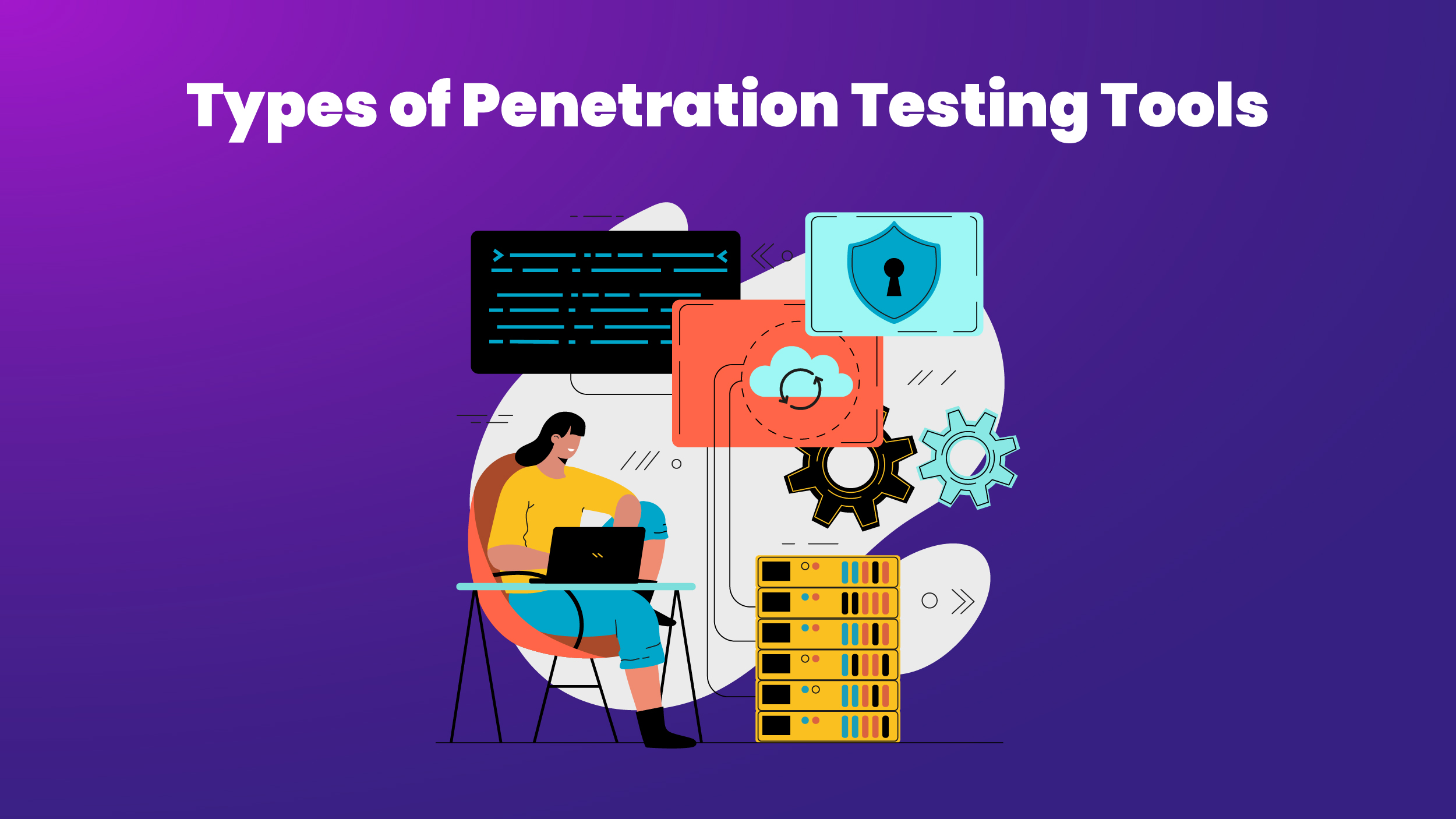In the realm of increasing cybercrime concerns, reports project global costs soaring to $10.5 trillion by 2025. To safeguard your business, enlist an expert security team, follow best practices, and employ effective penetration testing tools. These tools play a crucial role in identifying vulnerabilities within your organization’s network, facilitating timely fixes. While numerous application penetration testing tools exist, selecting the optimal one can be intricate. This article aims to guide you in choosing the best tool for your web application.
Let’s get started!
What are Penetration Testing Tools?
Penetration testing, also referred to as pen testing, is a technique employed by computer security professionals to identify and exploit security weaknesses in a computer program. These experts, commonly known as white-hat hackers or ethical hackers, replicate real-world attacks conducted by malicious hackers, also known as black-hat hackers.
When organizations perform penetration testing, they employ security consultants to simulate a security attack on their secure facilities, in a manner akin to real criminals. The findings from these tests assist organizations in enhancing the security of their applications.
Having gained insights into the meanings of these tools, let’s now delve into a crucial question: What is the most used tool for penetration testing?
Types of Penetration Testing Tools
 When putting together a penetration testing toolkit, it is essential to have a diverse range of tools at your disposal. Here are some commonly found tool categories that are typically included in such toolkits.
When putting together a penetration testing toolkit, it is essential to have a diverse range of tools at your disposal. Here are some commonly found tool categories that are typically included in such toolkits.
Port scanners are tools that detect open ports on a system. They are particularly useful for testers aiming to access a network as they allow them to identify the operating system and applications in use. Port scanners play a crucial role in reconnaissance and can offer insights into possible attack vectors.
Vulnerability scanners are tools designed to identify existing vulnerabilities in servers, operating systems, and applications. They also detect misconfigurations that can be taken advantage of during testing. In essence, these scanners provide reports that assist penetration testers in identifying exploitable vulnerabilities that can be used to gain initial access to a system.
Network penetration testing tools, such as Kali Linux, nmap, Wireshark, and Metasploit, are employed to evaluate the security of network infrastructure and uncover any potential vulnerabilities. These tools play a crucial role in ensuring the strength and resilience of networks.
Web proxy enables penetration testers to intercept and alter the traffic between their browser and an organization’s web servers. This capability aids in the identification of concealed form fields and other HTML elements that could potentially facilitate attacks such as cross-site scripting (XSS) or cross-site request forgery (CSRF).
Also Read: Hacking the Hackers: A Deep Dive into IoT Security Protocols
Password cracking is a popular technique used by attackers to gain higher privileges on a system or network. Its main target is the password hashing process. By utilizing password crackers, penetration testers can assess whether an organization’s employees are utilizing vulnerable passwords that may be exploited.
5 Best Penetration Testing Tools for 2024
 When it comes to identifying and eliminating vulnerabilities in your system, there is a wide range of testing tools available. However, selecting the most suitable one for your web application can be quite a task. So, let’s discuss some of the top penetration testing tools and the features they offer to users.
When it comes to identifying and eliminating vulnerabilities in your system, there is a wide range of testing tools available. However, selecting the most suitable one for your web application can be quite a task. So, let’s discuss some of the top penetration testing tools and the features they offer to users.
1. Metasploit framework
Metasploit, an open-source framework, scans networks to uncover vulnerabilities. With over 1,600 exploits and 500 payloads, it supports offensive and defensive security tasks. Prioritize and mitigate vulnerabilities effortlessly using the Vulnerability Validation Wizard. Ideal for organizations of any size, Metasploit’s user-friendly, free architecture enhances application security.
2. Nmap
Port scanning, a common tactic for cybercriminals, uncovers system vulnerabilities by identifying open ports and essential information. Network Mapper (Nmap), a versatile open-source tool, aids developers in scanning and auditing open ports, performing host discovery, and detecting OS details, contributing significantly to penetration testing in organizations. With multiple scanning types and a supportive community, Nmap stands out as a crucial asset for security.
3. Sqlmap
sqlmap, an open-source penetration testing tool, automatically detects SQL injection vulnerabilities in web applications. Testers use it to perform various SQL injection attacks, extract sensitive data, and support multiple databases like MySQL and PostgreSQL. With features such as hash cracking, table/column dumping, and fingerprinting, sqlmap streamlines penetration testing without the need for scripting expertise.
Unlike general-use tools like Metasploit, sqlmap offers a specialized and user-friendly approach to penetration testing, requiring only basic knowledge of database queries.
4. Burp Suite
Burp Suite, a Java-based web security tool, facilitates testing by intercepting and modifying HTTP/HTTPS traffic. It scans for vulnerabilities like CSRF, SQL injection, and XSS. The free version includes essential features, while professional and enterprise editions offer advanced capabilities through a subscription. Easy to use, they support both manual and automated dynamic testing.
5. OWASP ZAP
OWASP Zed Attack Proxy (ZAP) is a Java-based web application scanner, serving a similar purpose as Burp Suite. It provides automated scanning features that aid users in identifying potential vulnerabilities such as SQL injections and XSS attacks.
OWASP ZAP provides additional functionalities to script attacks, intercept and alter traffic, and generate comprehensive reports. These advanced capabilities enable users to conduct thorough and personalized penetration testing.
This free penetration testing tool is accompanied by an active and supportive community that offers assistance to users facing any challenges. It is particularly beneficial for developers who are engaged in building applications that involve user interactions and connecting to databases.
To Conclude
Conducting penetration testing is a crucial practice to safeguard networks against intruders. Although there are comprehensive paid options available, numerous penetration testing teams opt for widely used open-source tools they are already acquainted with. With a diverse array of penetration testing tools at their disposal, penetration testers can effectively conduct thorough assessments of their environments using various free tools. By making strategic investments in the appropriate tools and software, enterprises can empower cybersecurity professionals with the latest innovations that keep them in step with cutting-edge cyber attacks. This proactive approach enables organizations to stay one step ahead of hackers and cybercriminals.

































